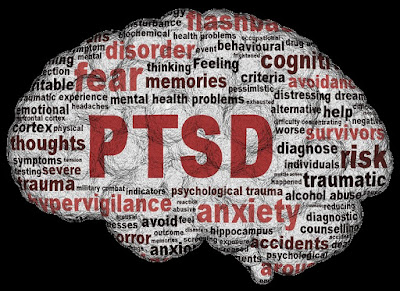Every disease that we go through gives us a new understanding.
Each challenge is an opportunity for strength. Some challenges can inspire others and some can actually uncover riches that all people can draw upon and share. I have Post Traumatic Stress Disorder (PTSD), and I’m begging everyone to use my tools.I have been forced to address my emotional reality and to learn to process my emotions. As a result, my engaged presence and emotional intelligence has thrived in a way that has opened my eyes to a global epidemic of escapism and denial.
Ouch.
The effect of my PTSD is obvious. It is obvious to me and everyone around me.
If I do not process my emotions in a calm, healthy manner I am a danger to myself and those around me. But the scary thing I found on this journey is that everyone is a danger to themselves and those around them if they do not process their emotions…it is just less obvious.
All panic, nervousness, anger and frustration is a physical emotional state that exists regardless of whether or not we address it. Many people can compartmentalize. Many can repress. Many can lie and say they’re doing fine. But when I looked at the emotional processing I was doing and then looked at everyone else? I realized no one was doing it.
No one was processing emotion. No one was observing their every emotional reaction and giving energy to consciously tend to it.
What I have been forced to learn to keep myself safe is a process. It is not abstract, it is tangible behavior with a step by step directive.
1) Experience an emotion. Observe the presence of a feeling.
2) Recognize the emotion.
a) Know that it is present.
b) If we’re practiced, figure out the characteristics of the emotion. (This takes years, and is not necessary to do all at once. Does the feeling have a quality? Is it comfortable or uncomfortable? Does it have a source in the present or is it triggered from the past?)
b) If we’re practiced, figure out the characteristics of the emotion. (This takes years, and is not necessary to do all at once. Does the feeling have a quality? Is it comfortable or uncomfortable? Does it have a source in the present or is it triggered from the past?)
4) We must take stock of our emotion to see if we are in a position to engage it fully, or if we have to set it aside for processing at the soonest convenience.
5) Engage the emotion. Walk up to it and shake its hand. Feel it. It is your body talking to you. Let it wash over you.
Every reaction we have is our body telling us something. It is a voice from within us begging for an audience, regardless of what our supposedly adult mind thinks of it. If we show up for ourselves in this way and get confident processing our emotions, we can be confident that when things are not going so well, the ones we love most are not going to have to pay for our lack of internal management skills.
When we think of the behaviors that make us cringe in society, from cruelty to carelessness, coldness to apathy, they all have a source in an emotion that someone does not know how to process. This is not symptomatic of evil, but of emotional ignorance. This ignorance is curable. Focusing on processing emotion can change everyone’s lives. I know that it has changed mine and those I am in contact with virtually or otherwise.
I know what caused my PTSD, but I was always looking for “what I could do with it” that would help others.
This is it.
We observe ourselves and process emotion as it comes up. Then we notice that we aren’t being bossed around by our fear of discomfort. Then we get confident. Then we are able to respond rather than react. Then we are able to be present more often. Then our world starts spiraling and expanding beautifully rather than us feeling trapped and frightened by everything that makes us the least bit uncomfortable.
It can change the world. One emotion at a time.
Find more great articles like this one at:




